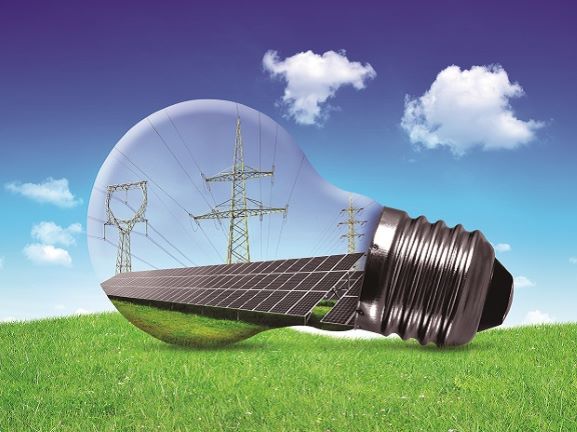

Good Distribution, Good For Renewables
Even as India’s renewable renaissance has stumbled in the past 18 months or so, with almost all external agencies and experts skeptical about the tart of 100 GW solar by 2022, the government has stubbornly maintained that it will get there. The fact of the matter is, the government might actually get close by awarding large solar projects to utilities, or even projects like the 7.5GW Ladakh project, which is still going through feasibility checks. But even the government cannot deny the fact that a critical component of the 100GW target, the rooftop solar component, is woefully behind its 40GW target, with barely 3.85GW in place on date. In fact, if we take only net metering projects into consideration , then that umber drops to a pitiful 2.3 GW, according to official figures. Almost all the blame for this slow implementation is laid at the door of discoms, who serve the crucial, tail end of the distribution chain.
The Distribution Utilities Forum (DUF), an initiative launched by The Energy & Resources Institute (TERI) and Shakti Sustainable Energy Foundation (SSEF), is an effort to understand the issues faced by by Discoms in implementing Rooftop Solar Systems and measures that will support faster implementation, from the discom perspective. It’s a critical perspective, and as their report showcases, discoms have some real issues, and suggestions, to solve the conundrum of slow growth despite a steep fall in costs of installation. So let’s move on to the key issues raised by discoms.
The big one is obviously the fall in revenues. By its very nature, ie, for those who have a rooftop of some size , and the capital to invest in a rooftop solar system, discoms have been aware that their best customers will opt for solar rooftops. That means a fall in revenues from their most dependable customers, in a system where T&D losses remain high, and many key segments are subsidised heavily.
A second issue is network stability, though we believe this will matter only in the medium to long term, as solar generation and injection into the grid from rooftops goes up. Discoms contend that when that happens, they are still stuck with their PPA’s signed with legacy generation firms, making oversupply a real loss making proposition for them.
Metering and billing has been flagged as another major issue, blamed on both infrastructure as well as lack of trained manpower. This has meant a discom slant towards gross metering over net metering, due to the simpler calculations required, plus an ability for the discom to better predict solar contributions to the grid and plan better. Discoms anticipate power quality issues such as harmonic distortions, managing peak load with intermittent solar rooftop generation, improper forecasting and scheduling of generation from solar rooftop, leading to higher charges under Deviation Settlement Mechanism (DSM) Regulations.
The same manpower limitations have been blamed on other delays, since solar installations require coordination of several implementing agencies, viz. Discom (for providing net-metering & approvals), Chief Electrical Inspector (for approvals), State Nodal Agency (SNA) (for release of subsidy), banks (for housing/ improvement loan), urban local body (for enforcing model building by-laws), rooftop owner (for providing access to roofs), developers/ aggregators/EPC contractors (for project implementation &maintenance), etc.
Another issue highlighted has been that of residential ‘prosumers’ with solar rooftop systems not being covered under ‘Time-of-Day’ (ToD) framework where applicable. Some discoms claim that this issue has an impact on both, financial and operational aspects as these ‘prosumers’ can use their excess solar generation exported to the grid during off-peak hours to settle energy imported from the grid during peak time. In the process, the utility grid is treated as a back-up power source by these ‘prosumers’.
On the positive side, Most of the Discoms were of the view that solar rooftop systems could help in the reduction of T&D loss, avoid over-loading of distribution transformers (DTs) & network congestion and also help in meeting demand with higher degree of reliability as generation is at the contract demand side.
On the security side, Anti-islanding is also a critical feature of a solar rooftop inverter. Islanding refers to the condition in which a distributed solar system disconnects in the event of a grid outage and stops supplying power. However, improper islanding can be dangerous to utility workers, who may not realize that a circuit is still powered through solar rooftop systems, when carrying out repair or maintenance. For the safety of the maintenance personnel, anti-islanding feature is a challenge for the utilities, especially in the case of solar rooftop system coupled with battery energy storage.
The Report has been compiled by researchers Rashi Singh, Rishabh Sethi and Robin Mazumdar
In a significant move toward advancing green energy and industrial growth in the state, Himachal…
Golabl chemical conglomerate BASF has announced that its now offering the world’s first biomass-balanced polyethersulfone…
In a crucial stint to bolster the biogas sector and sustainable dairying in the country,…
TotalEnergies SE has received approval to proceed with its Middlebrook solar and battery project in…
Andhra Pradesh Chief Minister Chandrababu Naidu has inaugurated the Rs 1,000-crore green hydrogen plant of…
The BITS Pilani has developed an innovative solution for managing landfill leachate, domestic septage, and…